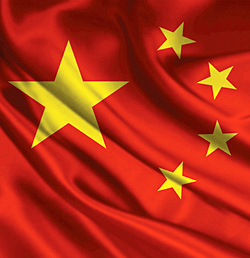INDIAN ARMED FORCES CHIEFS ON OUR RELENTLESS AND FOCUSED PUBLISHING EFFORTS

The insightful articles, inspiring narrations and analytical perspectives presented by the Editorial Team, establish an alluring connect with the reader. My compliments and best wishes to SP Guide Publications.

"Over the past 60 years, the growth of SP Guide Publications has mirrored the rising stature of Indian Navy. Its well-researched and informative magazines on Defence and Aerospace sector have served to shape an educated opinion of our military personnel, policy makers and the public alike. I wish SP's Publication team continued success, fair winds and following seas in all future endeavour!"

Since, its inception in 1964, SP Guide Publications has consistently demonstrated commitment to high-quality journalism in the aerospace and defence sectors, earning a well-deserved reputation as Asia's largest media house in this domain. I wish SP Guide Publications continued success in its pursuit of excellence.
- Appointments Committee of Cabinet approves one-month extension in service of Chief of the Army Staff
- Admiral Dinesh K. Tripathi assumes Command of the Indian Navy as 26th Chief of the Naval Staff
- Prime Minister witnesses 'Bharat Shakti' – a Tri-Services Firing and Manoeuvre Exercise in Pokhran, Rajasthan
- Interim Defence Budget 2024-25 — An Analysis
- Union Defence budget 2024
- Prime Minister Modi Commemorates Indian Navy Day in a Grand Ceremony
Firming west of Indian Ocean

China has already cemented its foothold in the Indian Ocean by gaining rights to explore polymetallic sulphide ore deposit in a 10,000-square-km international seabed in the Indian Ocean over next 15 years
The recent Chinese announcement of establishing her first military base in Seychelles was commented with consternation in the Indian media. Why should Indians be surprised? The biggest embassy in Seychelles for the past 15 years has been of China. In late 1990s, China signed an agreement with Seychelles to build refuelling facilities in the numerous uninhabited outlying islands of Seychelles, for use by China, Seychelles and their friends; ‘friends’ being an euphemism that will obviously be dictated by Chinese perceptions.
The agreement portrayed strategic forethought as seen through the recent announcement that PLAN fleets “may seek supplies or recuperate at appropriate harbours in Seychelles... as needed during escort missions.” Considering that the agreement had been signed in 1990’s, development of the base must be in advanced stages with significant number of PLA soldiers present in garb of development workers – akin to their presence in Hambantota in Sri Lanka.
Chinese strategic designs on the oceans were more than apparent in the expelling of some 3,500 Indian families from Fiji years back (China engineered?) and same number of Chinese families quietly slipping into Fiji, half of which were probably PLA. Similar would be the PLA presence in Myanmar, Bangladesh and Pakistan including Pasni, Karachi and Gwadar.
The Indian Ocean is the third largest water body in the world and borders nearly three dozen states, covering around 73.6 million sq km. A naval build up with increased submarine proliferation is occurring quietly in the region. While Seychelles Foreign Affairs Minister Jean-Paul Adam says his country has ‘invited’ China to set up a military base on the archipelago to beef up the fight against piracy, the text in between the lines is unambiguous.
Off the coast of Somalia, the PLAN presence over the years has been a complete flotilla that is turned over every few months, facilitating exercising PLAN, keeping IOR under surveillance and periodically doubling presence for short periods on pretext of turnover. PLAN base(s) on the Seychelles archipelago will without doubt have elaborate surveillance facilities (akin to Coco Island in Bay of Bengal) to serve as a listening-cum-surveillance post covering the western end of the IOR. Significantly, the announcement states that the base is intended to not only re-supply PLAN but also facilitate ‘recuperation’ during escort missions.
Despite Chinese shrouds of secrecy, it is estimated to currently hold over 90 submarines including some 36 Soviet-designed second-generation submarines. The number of nuclear-powered submarines is around 20 and focus for additions are on this variety with three-four already in advanced stages of building. This capability needs to be viewed together with Chinese plans to deploy by 2016 at least three aircraft carriers to dominate sea lines of communications (SLOC) including through the IOR. Other than the already unveiled first aircraft carrier Varyag procured from Ukraine, China acquired two semi-finished aircraft carriers from Russia (akin to Gorshkov class) some six years back.
There are estimates that future Chinese aircraft carriers could be twice as fast as existing ones, perhaps with twin decks for speedy launch and landings and stealth technology that China stole from the US. These aircraft carriers can hardly be expected to traverse the high seas individually but will be complete Carrier Battle Groups comprising the aircraft carrier, guided missile destroyers, cruisers, submarines, frigates for anti-submarine warfare and oil tankers. China has already cemented its foothold in the Indian Ocean by gaining rights to explore polymetallic sulphide ore deposit in a 10,000-square-km international seabed in the Indian Ocean over next 15 years. Countries in the IOR need to take note.
The views expressed herein are the personal views of the author.





